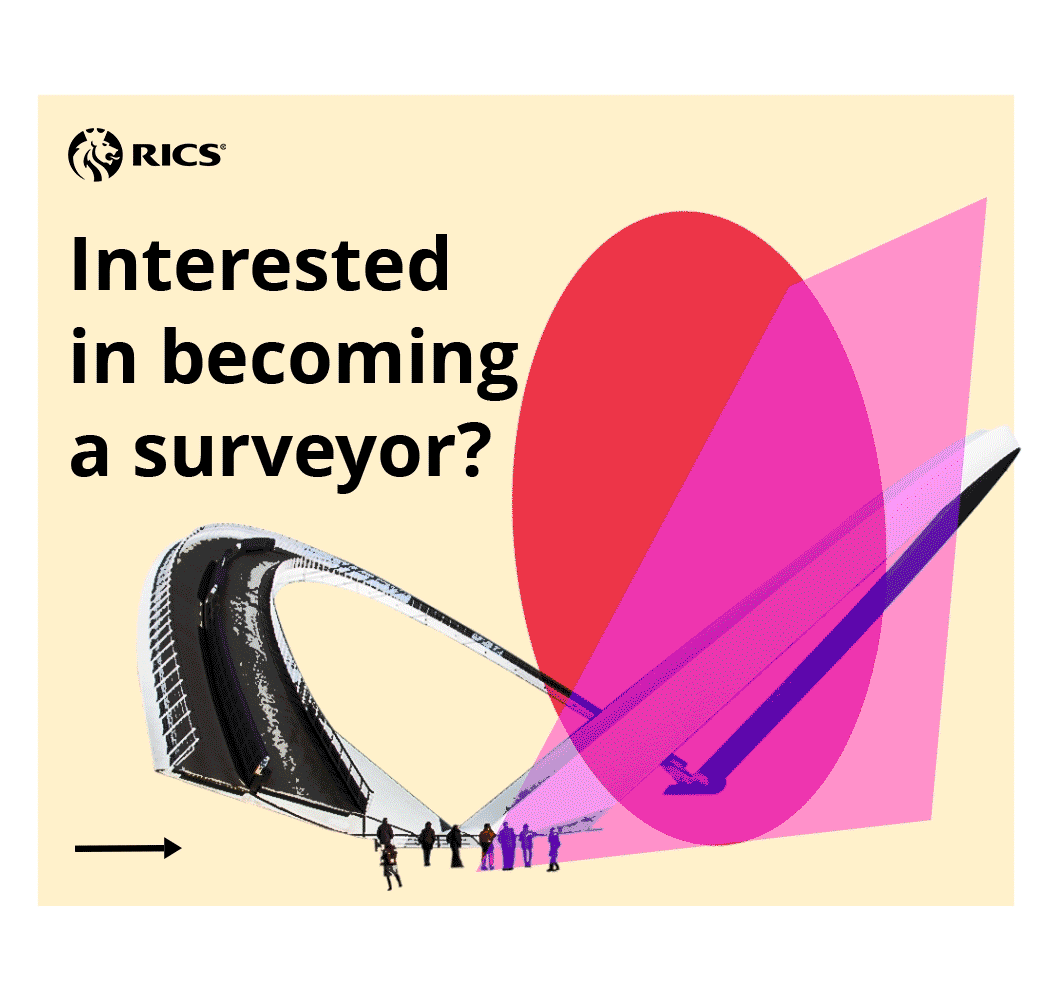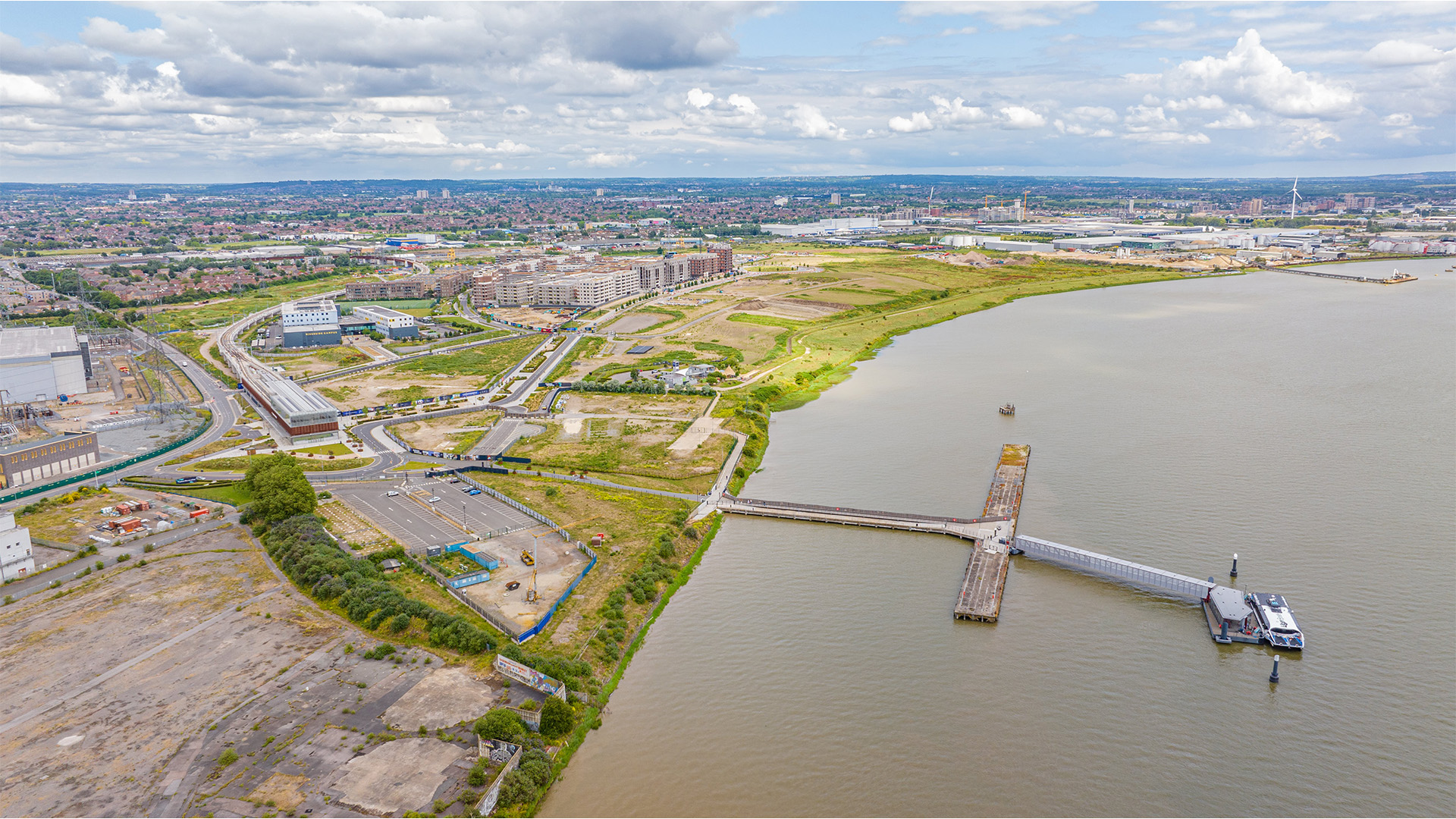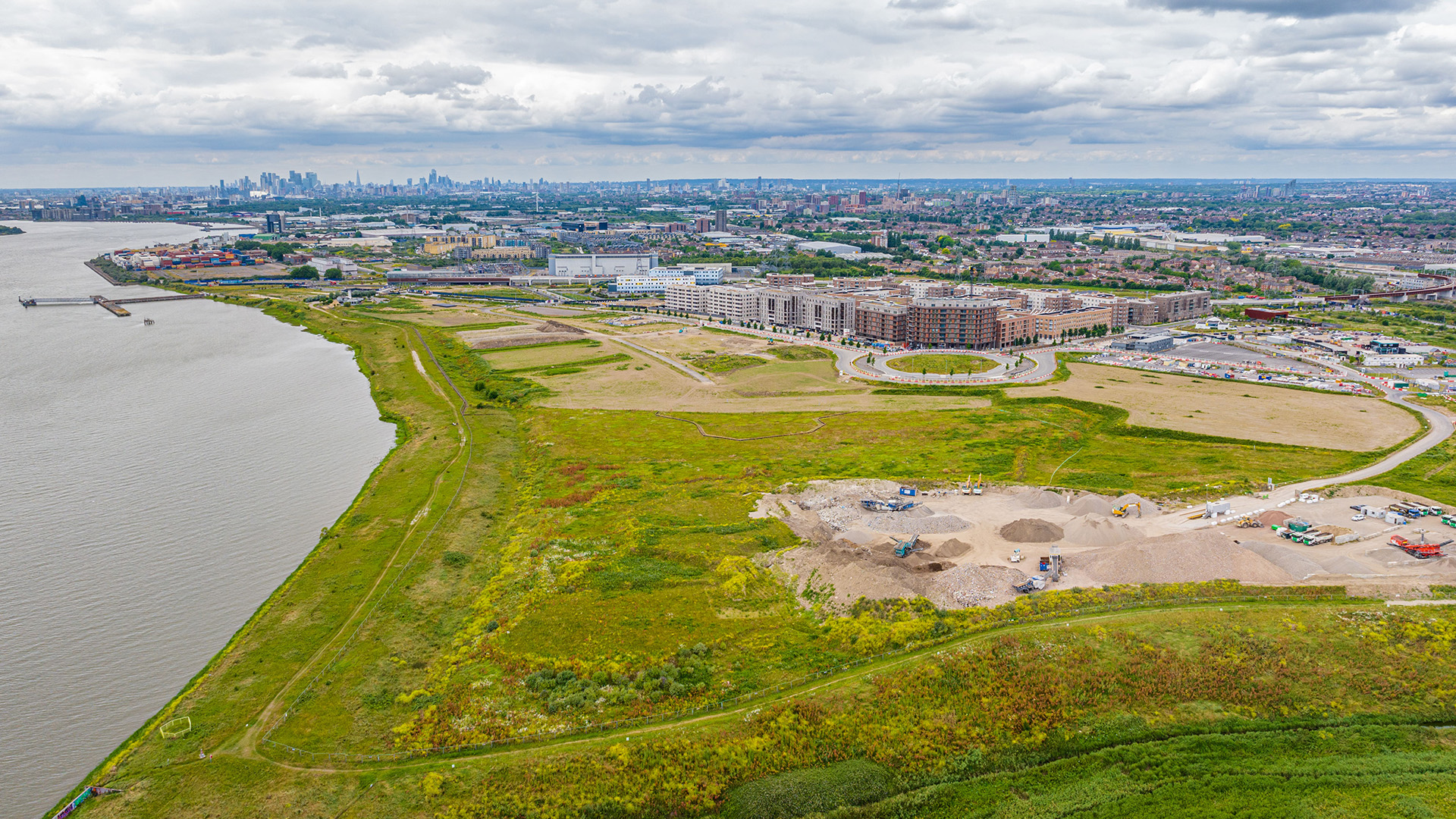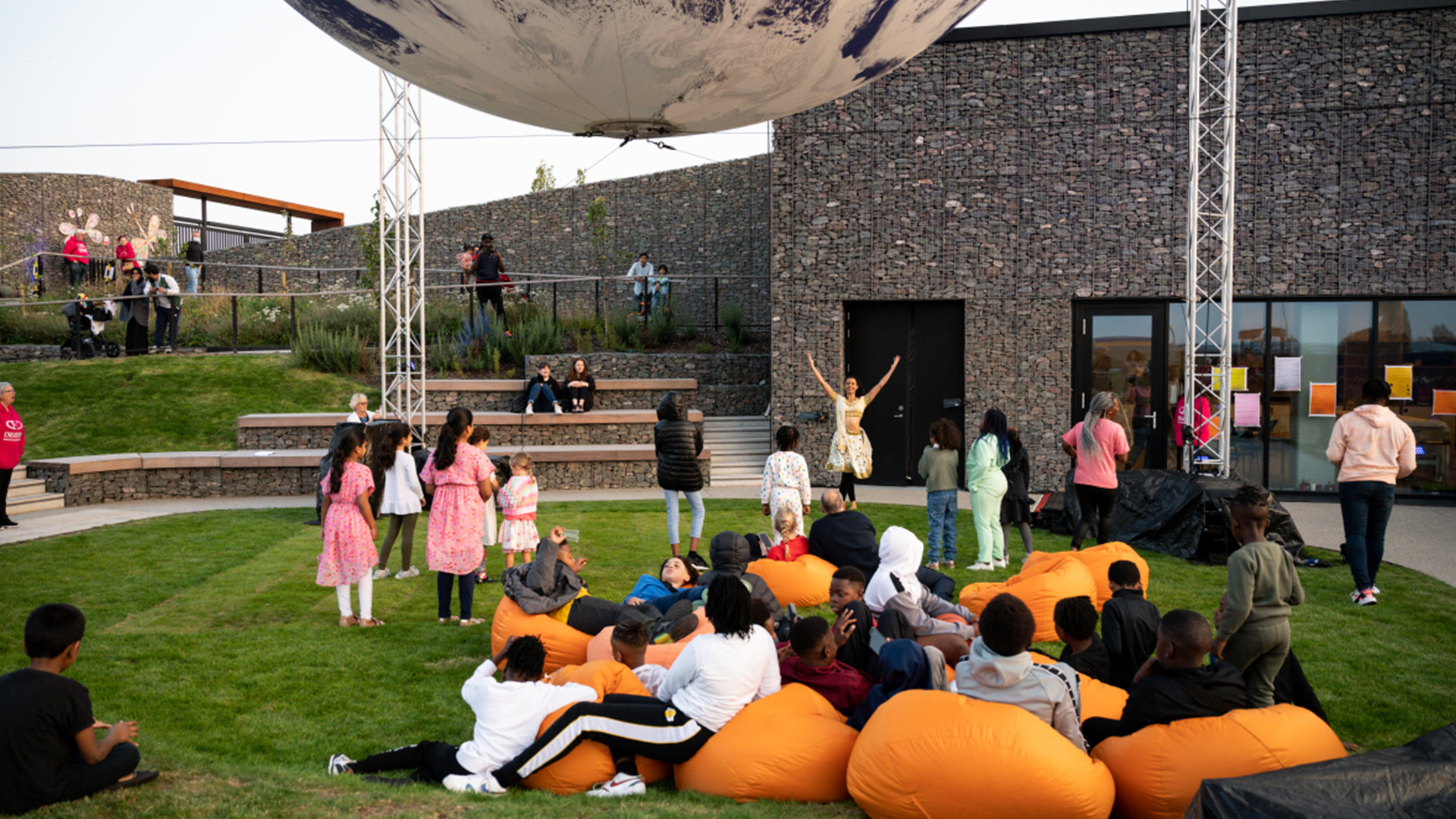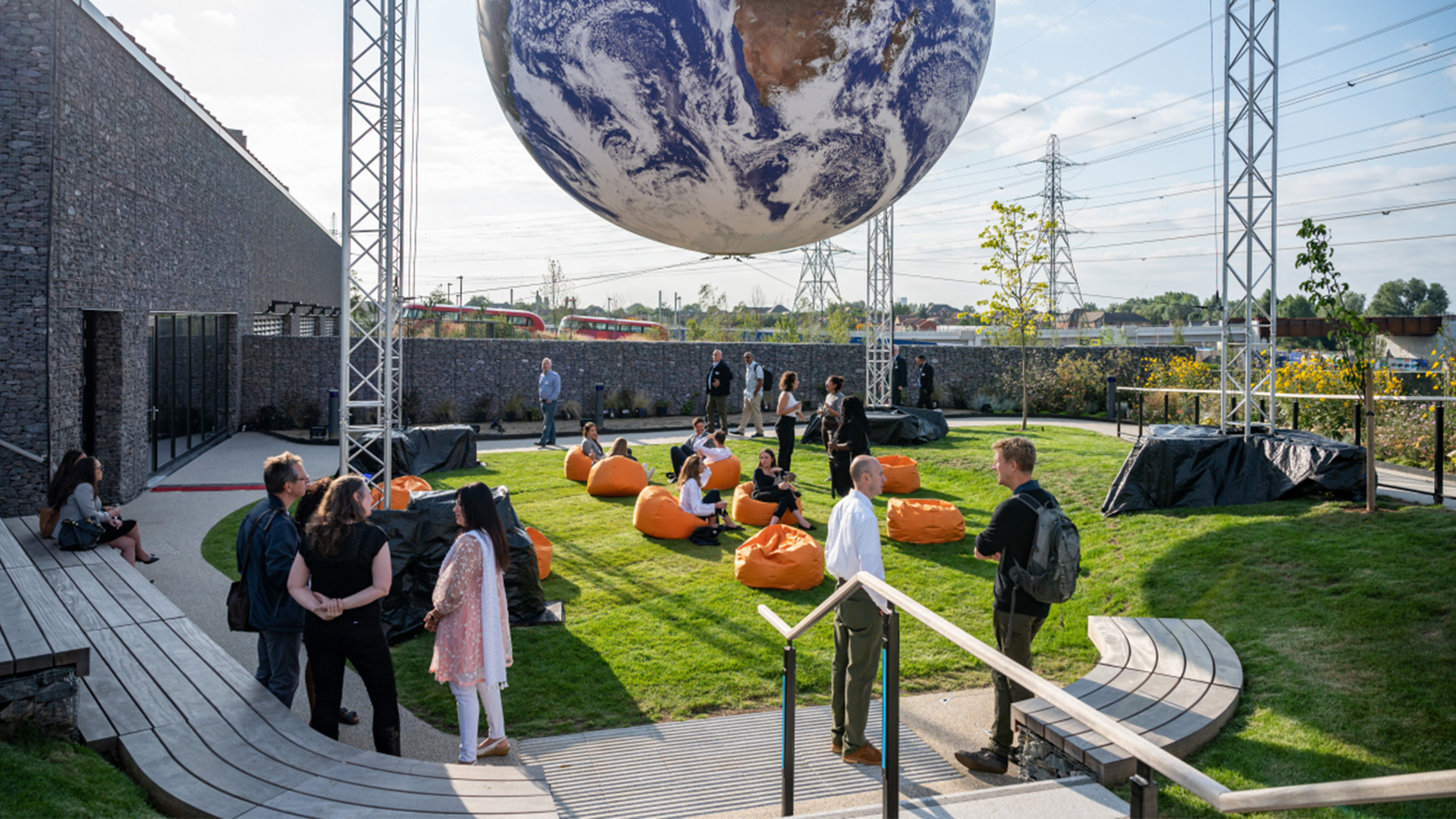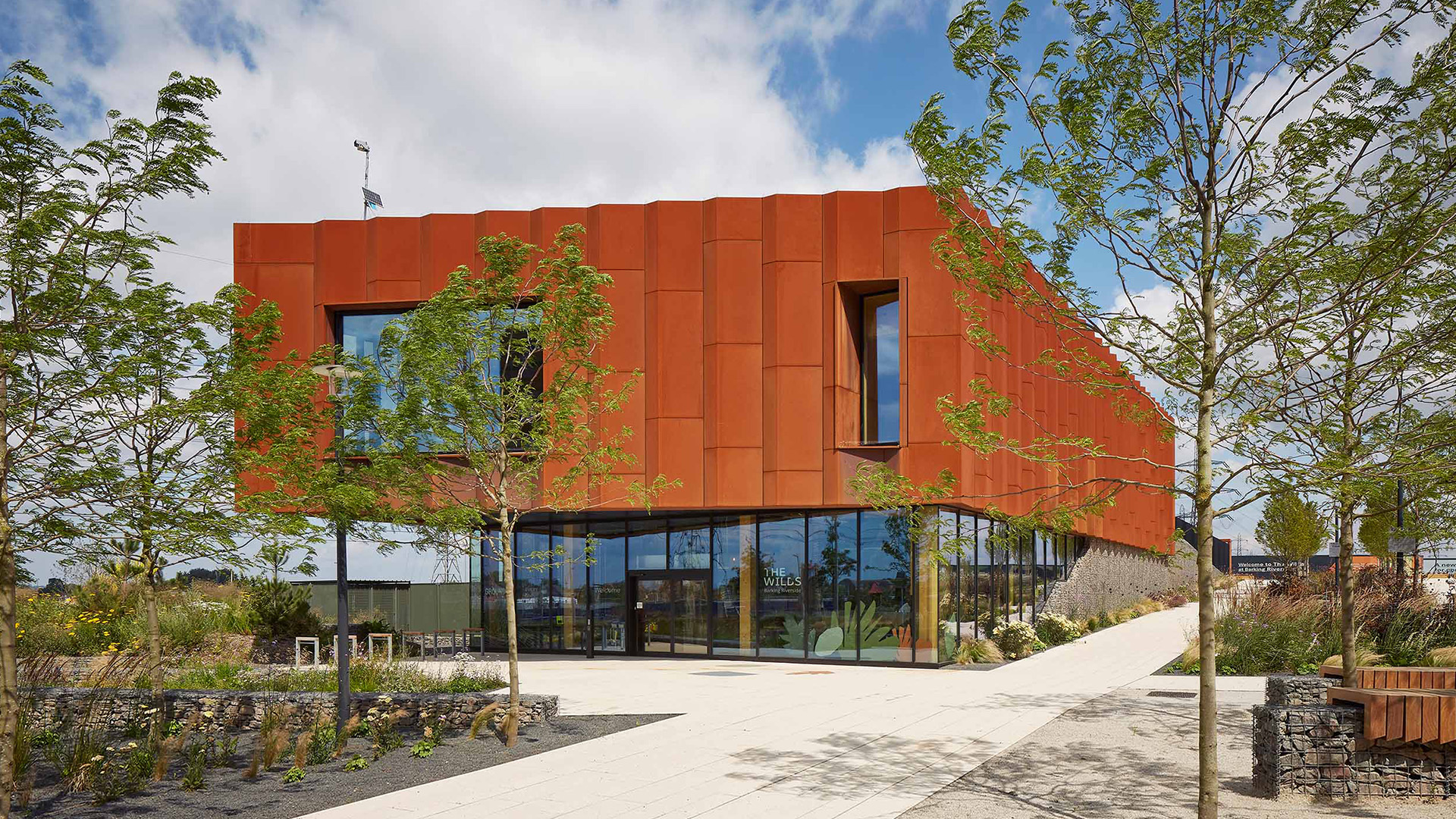
Barking Riverside train station
It was already one of the biggest regeneration projects seen in the UK in recent decades. But the team at Barking Riverside Limited (BRL), a partnership between the Mayor of London and housing association L&Q, recently upped the ante considerably.
In July, BRL submitted a planning application that, if approved, would nearly double the number of homes on the site, from 10,800 to as many as 20,000 – an increase that is nothing if not ambitious. So, what progress has been made to date? What challenges have been overcome? And how does BRL intend to create so many more new homes?
The Barking Riverside site is located on the northern bank of the River Thames in the London Borough of Barking and Dagenham (LBBD) at the eastern edge of the city. It comprises 443 acres of brownfield land – an area larger than Hyde Park – that was previously occupied by Barking Power Station.
The regeneration of the site began in 2007, when the first site-wide planning permission was granted and stage one of the project subsequently completed. However, that permission was based on an extension of the Docklands Light Railway (DLR) from Beckton, which in 2011 was deemed unviable. Clearly, that was a problem.
Working with the Mayor of London, L&Q, Transport for London and central government, the team succeeded in securing funding for the extension of the London Overground to a new station at Barking Riverside. It was at this stage that the BRL board was established, comprising representatives from the Greater London Authority (GLA) and L&Q.
This partnership led to the construction of the new Barking Riverside Overground Station, which was opened by the Mayor of London, Sadiq Khan, in July 2022. The station is now part of a new transport interchange hub alongside a new river-bus pier connecting the north and south of the Thames, alongside bus and cycling routes.
Sarah Phillips MRICS, head of estates at BRL, says it is difficult to overstate the importance of the new transport links for the project, which also include an Uber Boat by Thames Clippers that opened in 2022. “The Overground station itself was key to this scale of housing – there was an amazing amount of work done before I joined the organisation,” she says.
“Because of where it's located in east London, unlocking the [public transport] site was crucial in being able to attract a wide group of people to the estate. The work that went into that was just incredible.”
Then there is the small matter of the outline planning application, which BRL submitted in July. According to Phillips, the reason for the increased housing ambition is simple enough: BRL knows that it has an opportunity to play its part in solving London’s chronic housing shortage. “The Mayor of London called Barking Riverside ‘an inspiring model for how to fix our housing crisis’ and ‘a blueprint’ for national government to follow,” says Phillips.
Helpfully, BRL is working in a part of the capital that has a strong track record of enabling development. In the last five years, only one council in London has granted consent for more homes and LBBD has been successful in attracting significant investment to the borough in the last decade.
“The Mayor of London called Barking Riverside ‘an inspiring model for how to fix our housing crisis” Sarah Phillips MRICS, Barking Riverside Limited
Overcoming economic hurdles
The area has not been immune to the wider economic situation in the UK. Interest rates increased significantly and rapidly following prime minister Liz Truss’ ‘mini budget’ two years ago. The Bank of England’s base rate may have started to come down in the last couple of months, but many house builders – not to mention households – are still licking their wounds.
What that means for LBBD is that housing completion on other sites in the borough is now running significantly behind expectations, meaning that the council is even more dependent on Barking Riverside if it is to have a hope of meeting its housing targets.
Assuming the application does indeed receive a positive response, the plan is to crack on as quickly as possible. That would mean that Barking Riverside’s current population could increase rapidly. Today, the site is home to 6,000 residents out of an originally anticipated community of 30,000 people. If the new application is granted, that could increase dramatically. Clearly, all those people will have a stake in the future success of Barking Riverside.
It is for this reason that BRL has established a community interest company (CIC), which is governed by a resident-led board, with checks and balances provided by corporate partners. The CIC will be charged with holding, owning and managing the estate.
“We went down that route so that residents can be at the forefront of leading the development, the estate and their homes,” says Phillips. “This is where they're going to be living, after all, and they are contributing to the estate service charge, so they should have the biggest say in how that's managed and administered.”
She adds: “We have a board of nine directors on the CIC, of which five are residents from the development. There will always be a majority of residents on the board for this particular entity. Once the site is fully developed, BRL will come to an end, at which point the whole asset is transferred to the CIC.”
“We have linear parks that are being incorporated as part of the design as well as in between the plots” Sarah Phillips MRICS, Barking Riverside Limited
Creating a community
Of course, managing the estate will not just be about roads and housing. While housing creation is incredibly important to BRL, it is equally dedicated to fostering a genuine new community, with all the social infrastructure and commercial elements that entails. “We have already invested over £400m into the early stages of Barking Riverside to create major pieces of social and physical infrastructure, including public transport, five new schools, several nurseries, two community hubs, convenience stores, a coffee shop, and a number of play spaces.” says Phillips.
In addition to physical assets, the plan is to include a significant volume of parkland and other green spaces that are these days considered a prerequisite of a sustainable urban community. “Green space is a huge part of Barking Riverside,” says Phillips. “And we are proposing two large new parks; the 50-acre Ripple Park and 19-acre River Park.”
“The Thames itself is such a unique selling point for our site and we really want to be able to harness that and make it accessible for people. At the moment, we've got play areas located across the estate. We have linear parks that are being incorporated as part of the design as well as between the plots.”
And despite that huge increase in housing numbers involved in the recent planning application, the plan is to further improve the anticipated green infrastructure. “We have these green corridors that have been enhanced as part of our new planning application, as well as play areas for all different age groups,” says Phillips.
The ambition at Barking Riverside is huge and it will take time. But the core team, as well as their public and private sector partners, are clearly very serious about much needed housing and all the facilities and amenities that Londoners have a right to expect. As Phillips puts it: “The momentum within BRL is massive.”

